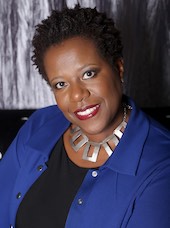13 minutes
Examining the causes of personal and career stress and how to fight back
If you’re feeling short-tempered or low on time, patience or sleep, you’re probably experiencing a form of burnout. Burnout occurs when fundamental human needs go unmet for long periods due to excessive or ongoing stress. And sadly, it feels like the norm for 2020.
“These basic needs consist of rest, proper diet, exercise or time out of doors, the pursuit of interests (not work or family), connection with people who see the real you, self-care and appreciation,” explains CUES member Leo Ardine, president/CEO of $304 million Red Bank, New Jersey-based United Teletech Financial Federal Credit Union, and a certified professional coach and founder of Wisdom Leadership Group LLC. “And while these needs should be the easiest to fulfill, they’re often some of the most challenging.
“That’s because we’re taught putting ourselves first is selfish,” Ardine continues. “Though it seems cliché, to be there for others, you’ve got to put yourself first, at least in terms of taking time to replenish.”
Ultimately, it lands on us—the people experiencing the stress—to cope. “But as an employer, colleague, or friend, we all have a role to play,” adds Ardine. “And there are things we can do to ease the feelings of stress and replenish vital areas of our lives. These encompass the workplace culture, embracing self-care and taking an empathetic approach.”

Addressing Workplace Stress
Christy Matta, M.A., trainer and consultant, reports that low salaries, lack of opportunity for advancement and heavy workloads have more than one-third of Americans reporting feeling chronic work stress. “And women are feeling it more acutely than ever. After decades of making progress in the workforce, many women are feeling less valued than men, according to a recent American Psychological Association survey, ‘Stress in the Workplace’.
“They’re feeling they don’t receive adequate monetary compensation for their work and feel that employers offer them fewer opportunities for internal career advancement than men,” Matta says.
Exacerbating the realities of job market stressors, Matta notes that women may be more likely to internalize stress and may hesitate to speak up for themselves or challenge behavior that they see as unfair.
“These negative emotions can also contribute to feelings of hopelessness and lead to career burnout,” submits Carol Stewart, MSc, executive, career and business coach and speaker/trainer for corporate women’s networks and black, minority and Asian networks. “However, this point is just the tip of the iceberg.”
Consider these additional reasons for workplace burnout, says Stewart, noting a 2018 Gallup survey:
- unfair treatment at work;
- unmanageable workload;
- lack of role clarity;
- lack of communication and support from managers; and
- unreasonable time pressure.
It is important to note that these factors are all attributed to the work environment, not the individual. So, if environmental (workplace) conditions improve, the pressure that leads to burnout can be eased, Stewart notes.
Employers can find new ways to change their workplace culture and minimize staff pressure, she adds. “First, address unfair work practices, so all employees are treated equitably. An example is potentially unsuitable meeting-times. Women are still the majority [care givers] for children and elderly parents, so avoid holding meetings at unsuitable times such as the end of the day,” stresses Stewart.
“Another key is to take a realistic look at what is expected from your employees and whether workloads are manageable,” she adds. “Invest adequate resources where lacking and eliminate unnecessary practices and tasks. Further resources may include additional staffing, equipment or technology that makes their jobs easier.”
Also, ensure employees are clear about their roles and what’s required. This removes the burden resulting from a lack of clarity.
“If you’re a manager, regularly communicate with your team and provide feedback,” advises Stewart. “Otherwise, people tend to draw their own assumptions, whether good or bad—and this not knowing can have a negative effect emotionally.”

Rising to the Challenge
Fortunately, employers and HR professionals are in a position to address some of the challenges being faced in the workplace today, says Ashley Utz, VP/human resources, employee experience, for CUESolutions provider CUNA Mutual Group, Madison Wisconsin. “We’ve challenged ourselves to think more innovatively, bringing creative solutions to new problems. These include implementing measures like flex time to address fluctuating demands, allowing staff more time off during the workday, and making up time after hours or on weekends.
“Recently, to help ease the stress of … everyday life, compounded even more now, we extended the holiday around Labor Day. This gave employees an additional four days paid time-off,” Utz adds. “This move directly resulted from employee feedback and internal measures to boost staff wellness and morale.”
Other recent corporate initiatives include:
- reprioritizing work to acknowledge reduced capacity;
- offering discounts and access to additional resources for parents, such as tutoring services;
- promoting employee assistance programs and encouraging employees to prioritize their mental health;
- frequently asking for employee feedback through pulse surveys; and
- offering two weeks of COVID-19 emergency paid leave.
“So far, the changes we’ve implemented have had an even greater impact on the health and well-being of our workforce than we anticipated—and we’re encouraged to continue thinking outside the box,” adds Utz.
Balancing the People-First Philosophy
Credit union professionals have long been willing to give, and this cooperative, people-helping-people philosophy can quickly become entrenched in one’s DNA. The pandemic has only underscored this point.
“One thing we see in crises is the way communities convene to support one another,” reflects Stewart. “And while it doesn’t necessarily remove a stressful working environment, adopting the people-helping-people philosophy can minimize some of the conditions that contribute to burnout. By providing the emotional and practical support needed during these times to others, it provides that safe space to take away some of our own pressures.”
There is, however, a flip side of the coin.

“People naturally get vested in something they believe in,” observes Utz. “An individual may expend too much personal energy in their desire to help, leading to burnout. Then there’s dealing with the economic fallout and second-hand stress of members dealing with debt and unemployment.
“Undeniably, credit union professionals want to assist and protect members through these uncertain times,” she continues. “But this passion can also generate new levels of anxiety, which makes prioritizing your personal well-being even more urgent. We need to pause and help ourselves manage both the physical and mental aspects when under duress.”
Prioritizing Personal Wellness
Many employees, both in the U.S. and internationally, must work from home in today’s pandemic world, a situation that can accelerate burnout. “Women especially are working excessive hours, many home-schooling their children while working,” explains Stewart. “And with a lack of face-to-face interaction with colleagues and home/work boundaries blurring, the tension can feel enormous.”
People are undoubtedly experiencing greater degrees of isolation, and for Utz—who has two young daughters, ages three and five—this blended COVID-19 working environment has been challenging. “As professionals and employers, we must revisit our definitions of success and realize we can’t perform at home and work the same as before and expect positive results.”
Creating separation from work and home is essential, and Utz recommends establishing a hard start- and end-time daily: “I start with coffee in the morning; this ‘officially’ launches my workday. At the day’s end, I make time to exercise before slipping back into my role as mom. The key is to give yourself this mental separation.”
Far-Reaching Responsibilities
“You can’t give what you don’t have if you’re not replenishing yourself,” stresses JaiDei Jackson-Fluker, a licensed professional counselor, speaker, life coach and CPA, based in Decatur, Georgia. “This not only requires a separation from home and work but also treating yourself right with an appropriate amount of sleep, drinking plenty of water and fulfilling other personal needs—like enjoying nature, meditation, reflection and finding ways to add laughter to your life.”
If you’re unsure how much sleep you need, experiment over the weekend. “Sleep until you wake-up naturally; that’s the number of hours you need nightly,” Jackson-Fluker notes. “Eat right and avoid using food, alcohol or drugs to compensate for replenishment or to make you feel better.”
Additionally, stay connected with co-workers and friends. “By giving yourself a solid support system, you can lean on others when needed,” she adds.

But it’s also important to establish boundaries both at work and with family. “For example, if you need an hour of uninterrupted time at home, communicate that with family members. Have a conversation and speak clearly about what you need,” advises Jackson-Fluker. “By enforcing boundaries, you foster respect and encourage structure. And, if you fail to plan, then you plan to fail.”
Learning to say no effectively is an often-overlooked life skill that is crucial to avoiding burnout, especially at this busy time of year. Jackson-Fluker suggests taking a moment before agreeing to a request for your time. “Let this person know when you say yes, it will be a sacrifice on your part. Often, we assume an individual should realize this, but it is not usually the case,” she notes. “Instead of saying no, we take on the request, creating internal resentment that feeds into our feelings of burnout.”
Balancing family commitments with work is another source of anxiety, and undoubtedly, these stressors multiply over the holidays. “This year will look different to us,” she adds. “If you can, try to include close family within your holiday COVID bubble. Seeing family provides some sense of normalcy. Also, take time to value your get-togethers more rather than focusing on the commercialism.”
The Impact of Social Unrest
On top of the pandemic, the increasing spotlight on social injustice has increased stress levels in us all, but particularly for those in the BIPOC (Black, Indigenous, People of Color) community. While these systemic issues are nothing new, Utz acknowledges, “change is painfully slow, and we cannot expect impacted individuals to leave their emotions at the door. In these trying times, we need to be advocates and provide support while showing grace and providing space.”
She suggests listening to the BIPOC community, meeting allies—people who aren’t part of the BIPOC community but are working to better understand its struggle and build inclusion—and reading as much as possible. (Also, she recommends subscribing to the 5 Ally Actions newsletter.)
Addressing the BIPOC community’s needs has long been a corporate mission for CUNA Mutual Group. In 2014, it added “inclusion” as a corporate value and shortly afterward formed its Diversity, Equity and Inclusion team. The team’s role is to foster a culture where all feel welcome, connected, supported and valued while offering resources to educate and engage employees.
Key objectives include:
- centering the voices of the BIPOC workforce, members and community;
- creating space for employees to speak up comfortably and openly;
- offering a diverse perspective when solving problems; and
- understanding values and providing support.
Responding to Social Unrest
Empathy is key to inspiring change, and Jackson-Fluker reminds us that we all should seek to understand first, rather than first wanting to be understood. “Be willing to see things from another perspective and have those hard but honest conversations.”
She notes that credit unions were established to fill a need. “Use this same empathetic approach when it comes to the social challenges and anxiety amidst the BIPOC community.
“As a woman of color, I already receive empathy from my peers,” adds Jackson-Fluker. “But to dissipate the micro-aggression that is rampant today, empathy needs to come from every sector of the population. And it’s hard to relate if this is not your experience. I encourage you to listen, to discuss issues, and to be sensitive and willing to learn from other people’s experiences.”
Still, making an impact can sometimes feel overwhelming. As a remedy, Jackson-Fluker recommends getting involved and engaged. “Pick a cause that interests you and be part of the solution. Small steps do collectively help.”
If you lack the necessary support or tools, she adds, “you must find your voice to ask for what you need. By using your voice and finding your agency, you avoid anger, disillusionment and the feeling no one is there for you. And never feel you must be perfect; it only sets you up for failure.”
Conquering Negative Cycles
With social unrest, public health crises and economic instability come feelings of worry, fear and scarcity. Moreover, studies show that a much larger area of a woman’s brain is geared to worrying, Jackson-Fluker notes. She recommends two books, The Female Brain and The Male Brain, written by neuropsychiatrist Louann Brizendine, M.D.
“The books discuss the differences in the brain’s worry center (the anterior cingulate cortex or ACC), which is larger in women than in men,” Jackson-Fluker explains. “This natural tendency to worry impacts women in the workplace disproportionately. So, if you’re dealing with fear, performance and confidence can be undermined or eroded.”
Blend these fears with today’s wide-casting social media dynamics, and it’s no wonder women are feeling an added sense of strain. “Our brains are built to keep the gene pool safe,” observes Ardine, “and we’re hardwired to watch for threats. These internal mechanisms recruit resources from the brain to help our body fight, flee or freeze—making us more prone to react to a perceived threat rather than giving a considered response. When we’re so busy or stressed, it’s harder to take a moment to breathe and ask what action would better serve the situation.”
In this place of scarcity—without enough time, money or resources—we fall into the mind-numbing cycle of task-completion-frenzy. Here irritability, short fuses, anger, jadedness and unkindness can all manifest. “And it’s not like we can get on a scale to see if we’re out of whack, as we do when we slip off our diet,” says Ardine. “But we can create other scales that serve as an early warning system.
“Imagine a scale from one to 10 that are must-haves in life: exercise, time for self, time for loved ones and sleep,” he continues. “Each week, jot down where you are on that scale. Higher is better. Those times when you are under a five, you might give thought to why and what you can do about it.”
Other antidotes to consider:
- For scarcity: Think gratitude. What one thing are you grateful for right at this moment? Breathe it in and sit with it. Feel the ‘feels’ you get. Call on these again and again throughout the day.
- For threat: Keep perspective and minimize triggers. These include awareness of social media and the news. Also, acknowledge the threat. For example, right now, this feels ____. Remember that later, it will feel different, and you have what you need to make it through these next moments.
- For excessive demands: Stop multi-tasking. This may feel counterintuitive, but studies show we’re not good at handling multiple tasks at once. So, take a moment. Breathe. Ask what would best serve right now.
- For loneliness: Bond with others. Connect with those who matter most or alleviate isolation by serving those in need.
“The trick is to acknowledge what you’re feeling and move through it, so you can arrive at a response that would best serve the moment, the other person or you,” stresses Ardine. “Whether it’s an email, a conversation, or something else. And in many ways, it’s like letting a storm rinse through you. Some storms are stronger than others, but allowing them to ‘move through’ lets you get through the moment and act in ways that make you feel proud.”
Life is handing us a lot of lemons right now, and it’s not always easy to see where all that lemonade is going to go. “But we can alleviate the sense of threat and burnout we may feel,” he says.
“To summarize: Be aware of triggers and plan a response; connect with others through service; cultivate moments of quiet; and, finally, learn how to breathe. A few simple breaths can make all the difference in a crazy world,” concludes Ardine. cues icon
Stephanie Schwenn Sebring established and managed the marketing departments for three CUs and served in mentorship roles before launching her business. As owner of Fab Prose & Professional Writing, she assists credit unions, industry suppliers and any company wanting great content and a clear brand voice. Follow her on Twitter @fabprose.






